
Holy Knight
gamer level 2
590 xp
590 xp
followers
1
1
Use my invite URL to register (this will give me kudos)
https://boardgaming.com/register/?invited_by=knight44
profile badges




recent achievements

Amateur Grader
Grade 10 more reviews or tips by clicking "Yes" or "No" in response to the question "Was this helpful?"
Grade 10 more reviews or tips by clicking "Yes" or "No" in response to the question "Was this helpful?"

I'm Gettin' the Hang of It
Claim that you have played a game today by clicking the "Played Today!" button on a game page 10 times.
Claim that you have played a game today by clicking the "Played Today!" button on a game page 10 times.

Rated 10 Games
Rate 10 games you have played.
Rate 10 games you have played.
I'm a Real Person
Select an avatar via the edit profile page
Select an avatar via the edit profile page
Player Stats
Critic (lvl 1)
155 xp
155 xp
Explorer (lvl 1)
129 xp
129 xp
Professor (lvl 0)
50 xp
50 xp
Reporter (lvl 0)
40 xp
40 xp
About Me
My name is Alex.
I am 30 years of age and reside in Greece's capital, Athens.
Looking forward to making good friends to share the hobby of board games with!
Overal, I enjoy nearly all kind of board games and card games. However, I am more inclined to greatly appreciate the ones that offer an increased level of complication because I see this as a very good opportunity to improve my strategic skills/thinking.
Also, a nice design is an important aspect for me in choosing a board game as it contributes to its atmosphere.
Holy Knight's Followers (1)
No Followers Yet

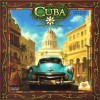








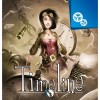


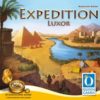







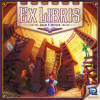

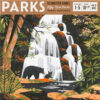



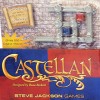
Word on the Street
Although I am not a big fan of word games, I find Word on the street a game of particular interest. The main reason for this is its great variety, which is lacking from several word games (and this makes them somewhat mundane to my opinion). By variety, I mean two things: First, the game’s objective is not solely focused on creating words, but also (and to a great extend) on thinking along the category that is specified by a card. This usually does not require specialized knowledge, but it challenges players to expand their scope of memory, in order to come up with as many answers as possible appropriate for the current category, within a certain amount of time. Secondly, variety is being apparent in the game through strategic aspects. That is, a word which may be a very good answer in one instance of the game, may be a weak choice at another instance. Therefore, players are required to combine their ability of quickly conjuring a wealth of words/answers appropriate, and simultaneously which makes the best choice according to how the gameboard exists at that point of the game session.
Each round is made up of a simple turn sequence, one for each of the 2 opposing teams, in order(not simultaneously), that flows in the following manner: The active team draws the next card and reads the question on it aloud. Next, the opposing team starts the time countdown, using one of the two provided hourglasses. Until the time limit elapses, the members of the active team have to come up with an appropriate word for the question on the card. They are free to exchange proposals among them, but in the end they must agree on a single word and announce it. Immediately after that decision is made, the team members manipulate the gameboard to reflect any changes brought about as a result of their having selected the particular word. To be specific, that entails moving large (and relatively heavy) squares with the letters matching the word towards their side. Meanwhile, the opposing team is responsible for supervising, although any disagreements are to be resolved after the time runs out. Then, play passes to the other team, which follows the exact same steps.
The game’s objective is to collect 8 letter squares, by consistently drawing them closer to your team’s side. Those squares all initially exist along the same lane on the gameboard, which represents a street with 5 lanes. During the game, they change lanes, according to answers given by the players, moving closer to one team or the other. Only once a square is moved off the board is considered as collected and counts towards the winning condition. Therefore, this element of moving the letter squares in a clever manner constitutes the main tactical part of Word on the street and also increases replay value because the same answers differ on how valuable they are depending on the state of a game session and the team’s plan.
Components include a gameboard, 216 cards with a tray to hold them, 2 hourglasses and the 17 letter squares (obviously not all letters of the alphabet exist), all of which are, to my opinion, of good quality and interesting design.
Although Word on the street is mostly thought of as a party game for up to 10 players (5 on each team), it can be well appreciated when played by even just 2 players. All together, it makes an intelligently designed word party game, that also appeals to a wider audience of gamers by blending tactical elements to its game play.